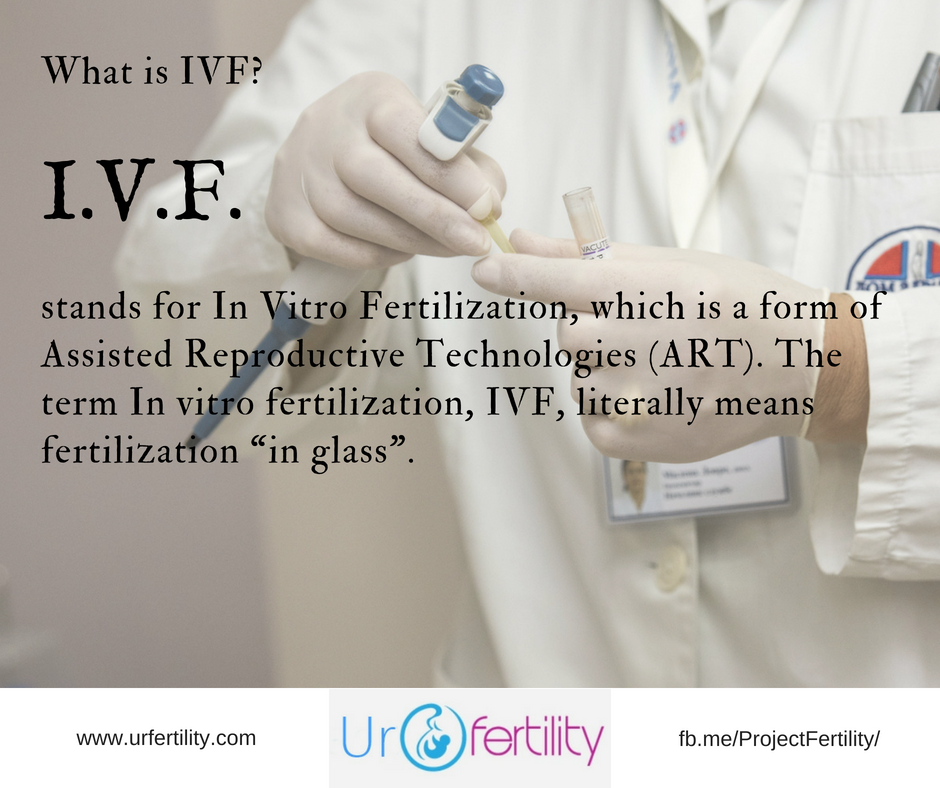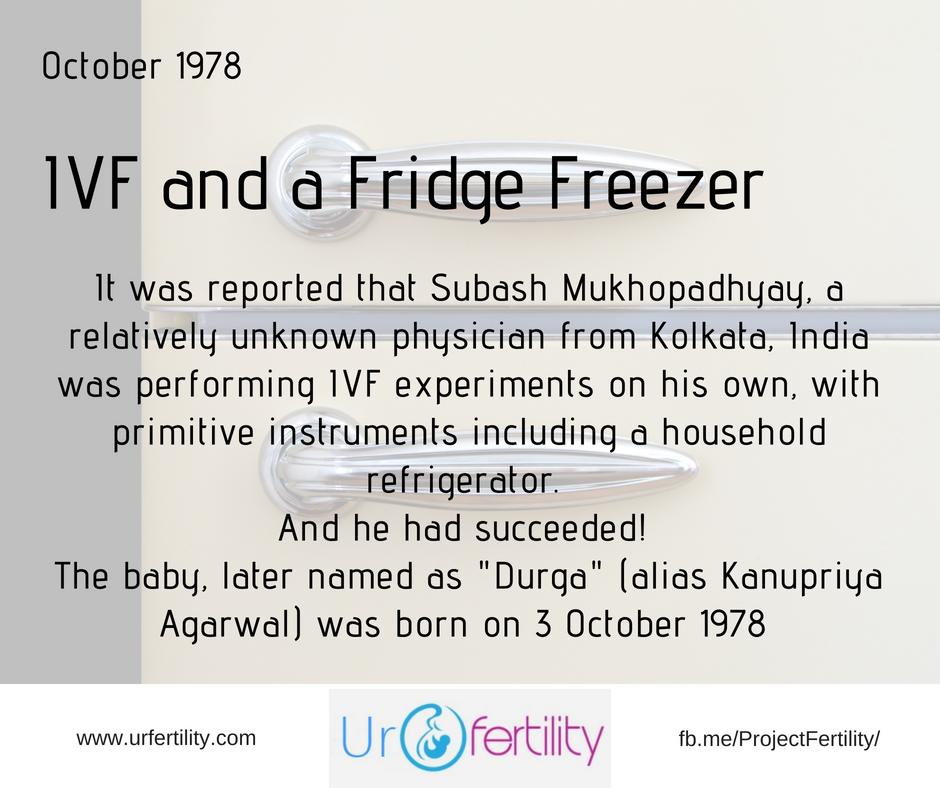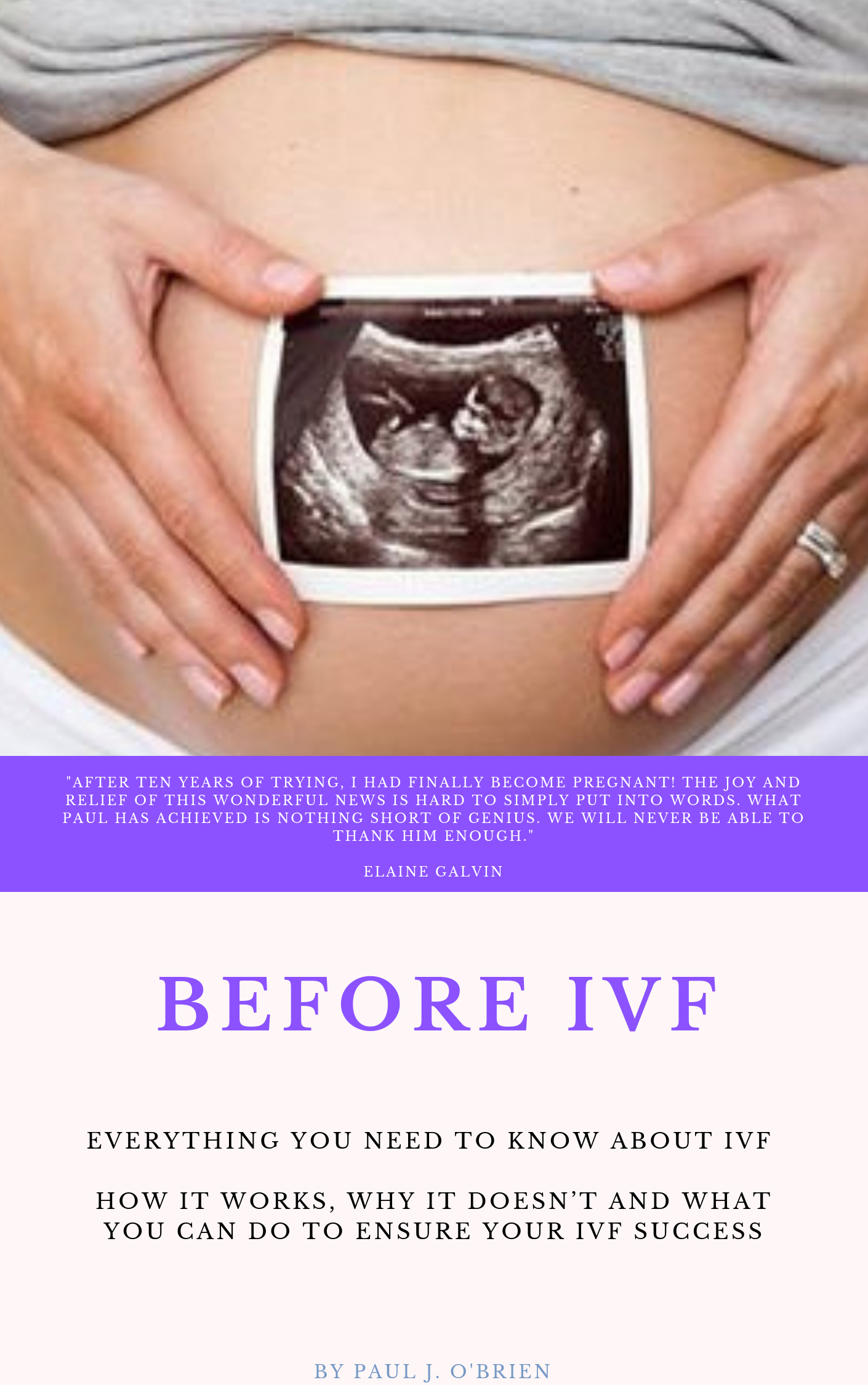What is IVF?
All Your Questions Answered
By Paul J.O'Brien B.A., N.C.E.H.S., Dip. Acu., Adv. Dip. OBB, Cert Clin. Med, Cert.CHM, Pn1, PN-SSR, PN-NCA, M.AFPA, M.ETCMA, M.C.Th.A.

What is IVF? Well, it stands for In Vitro Fertilization, which is a form of Assisted Reproductive Technologies (ART). The term In vitro fertilisation, IVF, literally means fertilisation “in glass”.
IVF can be very confusing, with so many unexplained abbreviations and initials you practically need to learn a whole to understand what your doctors are saying and what is being posted on fertility support forums! IVF is also very expensive and often not covered by insurers and it’s hard to make an informed choice if this is the right decision for you.
I’ll be completely upfront with you, I ALWAYS prefer a natural pregnancy, but sometimes that isn’t an option for some couples, so I support many of them going through IVF...it’s a tough process physically and emotionally, and rarely explained properly. So in this section of my site, that’s what I am going to do.
Below you’ll find a detailed article explaining what is IVF and I’ll give you a brief overview of the history and reasons for use and success rates, and I’ll also tell you how to increase the success rate of IVF by up to 60%! Immediately below you will also find a list of links to more detailed articles on a number of aspects of IVF that may be helpful.
What is IVF Used For? - All The Reasons You May Need IVF Explained
IVF Fertility Treatment - A 7 Step Process for Making a Baby (Steps 1 & 2)
IVF Treatments - A 7 Step Process for Making a Baby (Steps 3-5)
IVF Treatment - A 7 Step Process for Making a Baby (Steps 6 & 7)
The Risks of IVF - Are They More Serious Than Clinics Let On?
How to Increase Your IVF Success Rate!
IVF Pregnancy - Good News or Increased Risks?
What is Clomid, and What Are the Serious Risks?
What is IVF?
Essentially medications are given to a woman to stimulate her ovaries to produce multiple eggs. After extracting the woman's eggs cells, the fertilization with extracted sperm is manually done outside of the human body using a “culture dish” like a test tube, beaker, or petri dish. (If there is infertility issue that reduces the ability of either the mother to produce eggs or the father to produce sperm, a donor may provide them).
The dish is then placed in an incubator.
Two to three days later, one to five embryos are transferred to the woman's uterus.
Pregnancy can be confirmed using blood tests about 13 days after egg aspiration. It can also be confirmed by ultrasound 30 to 40 days after aspiration. The entire procedure is performed over approximately three weeks. For a detailed breakdown of EVERY step in this process read my article IVF Fertility Treatment.
What is IVF though, beyond the technical description? What IVF can really mean though is the difference between a couple having a child and not. IVF has meant the world to many parents around the world and to others it means loss and devastation from the failure of the procedure and from the side effects. In this article series I’m going to cut through the jargon, the false advertising, forum stories and more and tell you the truth about IVF, give you the solid facts, the actual research and explain it all in way that gives you needed information and support. And, I’m also going to share with you how to increase the success rate of IVF by 60%.
A great deal of my time in the clinic with my patients is spent explaining exactly what is IVF, what ivf fertility treatment is made up of, what the drugs used do, the success rates, and the differences between it and other treatment types such as ICSI or IUI.
One of the reasons I do this is because most IVF clinics simply don’t.
What is IVF Conveyor Belt Syndrome?
Most IVF clinics don’t give you the important facts and figures. They don’t take the time to sit you down and explain each aspect of the process. They don’t explain the drugs or there side effects. Many clients, at least according to the experience of many of my patients before they come to me, if that it feels like a conveyor belt. The are simply being processed along a money making system, devoid of compassion, kindness and support.
To me this is not the practice of medicine and I chose to sit with my patients and fully inform them. Knowledge is empowering. The more you understand about why you are being told to take certain drugs, when you understand what is ivf in terms of the full treatment protocols and the goals of each stage it gives you agency and allows you to make better decisions. So with that in mind let's look it’s background and then a more detailed examination of What is IVF?
Test Tubes and Your Fridge - A Brief History of IVF

In Vitro Fertilization is a fertility procedure which was first done successfully in 1978 in England by Dr. Robery Edwards, an embryologist (someone who studies embryo’s, a fertilized egg) and Dr. Patrick Steptoe, a gynecologist (someone who specializes in women’s reproductive health). The first-ever “test tube” baby (though more accurately, in vitro fertilization actually happens on a dish called a Petri Dish) named Louise Brown was born on July 25th, 1978 in Oldham General Hospital, Greater Manchester, UK. (1)
Shockingly, while all this was going on a doctor in India using a normal household fridge was also developing his own IVF technique! In October 1978, it was reported that Subash Mukhopadyay, a relatively unknown physician from Kolkata, India was performing experiments on his own with primitive instruments including a household refrigerator. And he had succeeded! The baby, later named as "Durga" (alias Kanupriya Agarwal) was born on 3 October 1978 (2).
Since then, the technology has been further advanced and developed by physicians and embryologists. In 2012 it was estimated that five million children had been born worldwide using IVF and other assisted reproduction techniques (3).
In 1981 a technique known as controlled ovarian hyperstimulation (COH) was introduced (4). This was based on using a drug to stimulate the follicles (this increases the number of eggs developed) during an IVF cycle, creating a greater number of eggs that can be collected and hopefully fertilized.
Modern IVF Developments
There have been three more modern developments to IVF that have increased the success rates.
- The ability to freeze and subsequently thaw and transfer embryos. This has significantly improved the feasibility of IVF use as it allows the woman’s body time to recover from over stimulation that can impact implantation rates. (5)
- The development of the intracytoplasmic sperm injection (ICSI). This is the injection of a single sperm directly into the egg. Developed by Gianpiero D. Palermo et al.in Brussels in 1992. This has allowed men who may not have sufficiently strong sperm to father a child. (6)
- The use of temperature controlled environment through all stages of IVF. When temperatures drop or rise too far away from 37 degrees (the average human body temperature), it can lead to detrimental and irreversible damage in some cases to the embryos. The introduction of temperature controlled environments have increased the success rates in IVF. (7)
What is IVF - Continued...
So to summarise:
IVF stands for In Vitro Fertilization and is medical treatment where eggs are stimulated via a drug regimen in woman's ovaries to produce multiple eggs. The eggs are extracted and fertilized with sperm in a “culture dish”. This then grows and develops in an incubator. Two to three days later, 1-3 embryos are transferred to the woman's uterus. Pregnancy can be confirmed using blood tests about 13 days after the transfer.
In the next article I'll address What is IVF Used For? Click here to continue.
What's Your Next Best Step With IVF?
If you’re trying for a family or planning on going through IVF, ICSI IUI, or have been through failed rounds, from poor egg growth, fertilization failure, sperm quality issues, miscarriage etc, and want to give this round the best possible shot of success and dramatically improve your fertility and reproductive health, to have a happy healthy baby, then …
- Download my Free "9 Reasons You Can't Get Pregnant" Guide to learn more about what complications may be present and what you can do to fix them!
- Subscribe to my newsletter to keep up to date with the new articles, how to guides, fertility recipes and more.
- Get Your Copy of "Before IVF: How it works, why it doesn’t and what you can do to Ensure Your IVF Success!". Over 430 pages, this guide provides answers to every question you could ask about fertility and how to maximise your reproductive health. It will help you beat the numbers in IVF and better still may help you conceive without ever having to go through IVF!
- Contact me with your particular questions and concerns and I'll do my best to help. :-)
Footnotes
- "1978: First 'test tube baby' born". BBC. 25 July 1978. Retrieved 13 June 2009. The birth of the world's first "test tube baby" has been announced in Manchester (England). Louise Brown was born shortly before midnight in Oldham and District General Hospital
- "Test tube triumph & tragedy – Nobel for UK scientist stirs memory of a Bengal doctor". The Telegraph. Kolkota, India. 5 October 2010. Retrieved 22 May 2012.
- Adamson, G.D.; Tabangin, M.; Macaluso, M.; Mouzon, J. de. "The number of babies born globally after treatment with the assisted reproductive technologies (ART)". Fertility and Sterility. 100 (3): S42. doi:10.1016/j.fertnstert.2013.07.1807
- "The Jones Institute for Reproductive Medicine website". Jonesinstitute.org. Retrieved 22 May 2012.
- Kyono K, Uto H, Nakajo Y, Kumagai S, Araki Y, Kanto S (2007). "Seven pregnancies and deliveries from non-mosaic Klinefelter syndrome patients using fresh and frozen testicular sperm". J. Assist. Reprod. Genet. 24 (1): 47–51. doi:10.1007/s10815-006-9079-4. PMC 3455089 Freely accessible. PMID 17177108.
- Pregnancies after intracytoplasmic injection of single spermatozoon into an oocyte[permanent dead link]. G Palermo, H Joris, P Devroey, AC Van Steirteghem - Lancet, 1992
- Ventura-Junca, P. et al. In vitro fertilization (IVF) in mammals: epigenetic and developmental alterations. Scientific and bioethical implications for IVF in humans. Biol Res. 2015 Dec 18;48:68. doi: 10.1186/s40659-015-0059-y



New! Comments
Have your say about what you just read! Leave me a comment in the box below.